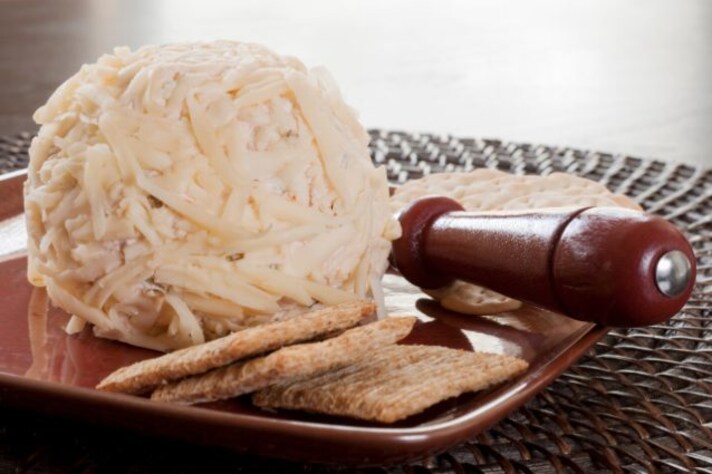Here’s Why You Should Never Use Cold Ingredients to Make Cheese Balls
Think cold cream cheese is fine for your cheese ball? Think again. Here's why using cold ingredients is the biggest mistake you can make with this iconic party snack.

There are few party starters more reliable than a good cheese ball. Creamy, savory, maybe a little nutty, and always a crowd-pleaser—it’s basically the culinary equivalent of a handshake: firm, friendly, and unforgettable. But despite its low-maintenance appearance, this classic appetizer has one rule you should never, ever break: don’t use cold ingredients. Seriously. If you’re reaching into the fridge five minutes before guests arrive and expecting spreadable magic, you’re in for a rude awakening—and possibly a broken cracker or two.
Cold Cheese Is a Brick, Not a Ball
Let’s start with the obvious: cold cream cheese is stiff. Not just firm—concrete-level dense. And when you try to mix that with herbs, shredded cheese, or any other flavorful mix-ins while it’s still refrigerator-chilled? You might as well try folding gravel into a stick of butter.
Cheese balls are all about smoothness. That melt-on-your-palate texture doesn't happen by accident—it comes from room temperature cream cheese that’s pliable and welcoming to other ingredients. Using cold cheese gives you lumps, frustration, and an end result that looks like you tried to mold it with an ice cream scoop.
Flavor Fallout: Why Cold Kills the Taste
Here's where things get even more dicey: cold ingredients dull flavor. When cream cheese is chilled, its fats are firm and less capable of carrying taste. Add to that a few minced onions, some smoked cheddar, or even garlic—none of it hits as it should if the base is a block of chill. Room temperature cheese, on the other hand, acts like a sponge for flavor. It absorbs seasoning, blends more evenly, and carries each note across your taste buds like it’s performing a sonata. Cold ingredients mute the chorus. And a cheese ball without a harmony of flavor? That’s not a hit. That’s a flop.

The Battle of Fork vs. Fridge-Chill
If you’ve ever tried to stir cold cream cheese with a spoon or, God forbid, a fork, you know the pain. You push. You press. You regret every life decision that led you to this moment. Instead of a smooth mixture, you’re fighting against resistance and getting nowhere fast.
When the ingredients are at room temp, they marry together easily. Mix-ins blend instead of clump. You actually end up with a cohesive, creamy mixture instead of something that resembles a culinary version of a broken axle. The effort you save is worth every minute of pre-softening.
How Cold Ingredients Ruin the Finish Line
Even if you manage to brute-force your way through mixing cold cream cheese, you’re not out of the woods. Now it’s time to shape your ball and roll it in its crust—maybe nuts, herbs, or crushed crackers. But here’s the rub: a cold ball doesn't roll. It crumbles. It cracks. It might even break off in awkward hunks instead of forming that beautiful, round globe that people want to dive into. Warm ingredients, though? They form, mold, and coat like a dream. Rolling becomes not only possible, but satisfying. The finish looks polished and party-worthy, not like someone dropped a snowball in chopped pecans and hoped for the best.
Serving Cold from the Start? That’s a Double Chill
You might be thinking, “But I refrigerate the cheese ball before serving anyway—why does it matter if I start cold?” Here’s the thing: chilling is about setting the cheese ball, not mixing it. When you refrigerate a fully-formed ball, it firms up just enough to slice cleanly or spread with a little pressure. But when you start with cold ingredients, you lose all that creamy cohesion from the beginning.

It’s like baking with cold butter in a cake batter. You can technically do it—but it won’t blend right, rise properly, or taste as luscious as it could’ve. Why settle for “meh” when you could have “mmm”?
The Rule of Room Temp
Waiting for cheese to soften might seem like a small step, but it’s a game-changer. Pull your cream cheese out at least 30–45 minutes before you’re ready to mix. Let it sit. Let it breathe. Let it become the silky base it was always meant to be. Same goes for other ingredients—like shredded cheese or butter—that you plan to incorporate. Temperature harmony means a cheese ball that sings.
;Resize,width=767;)
;Resize,width=712;)


